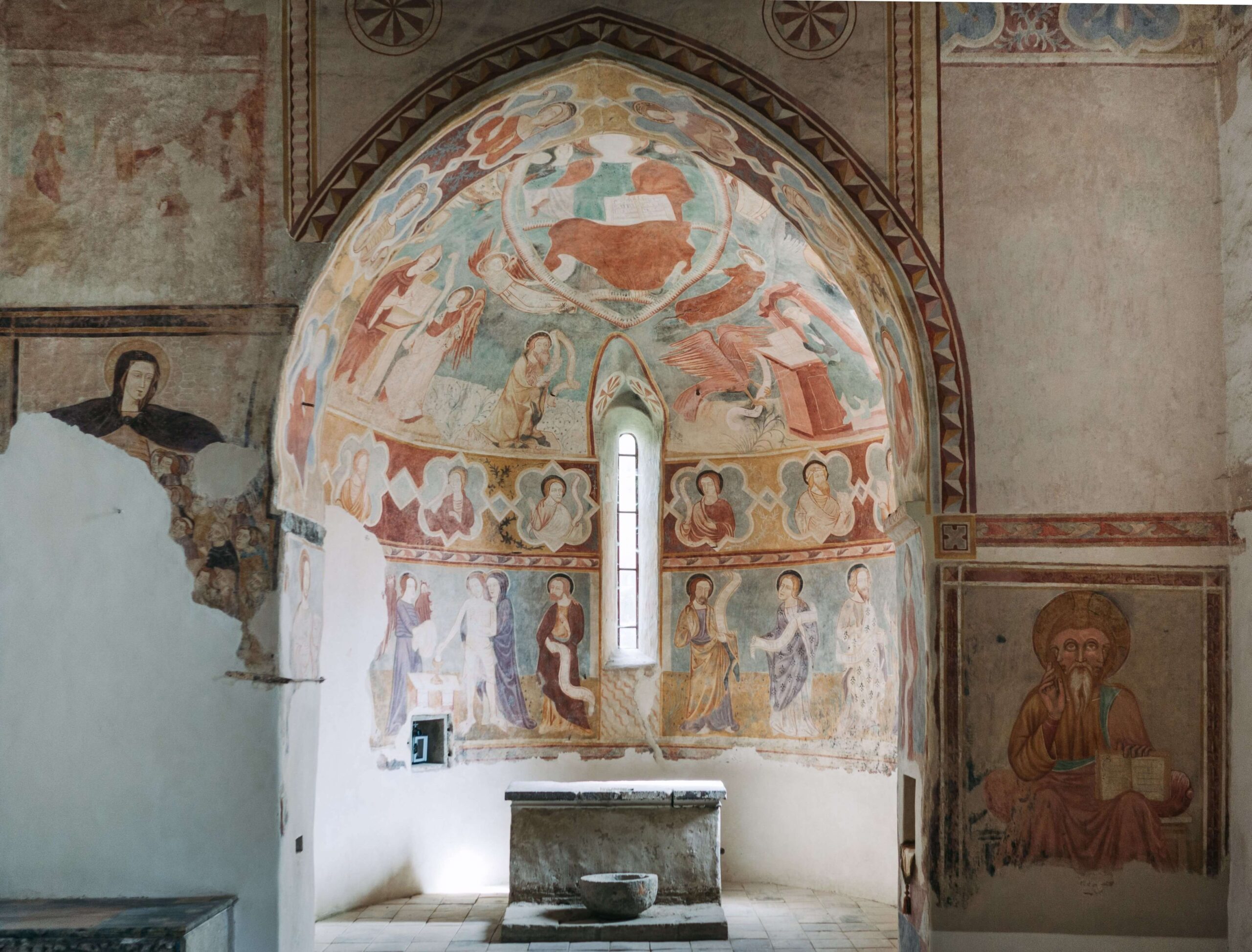This website uses cookies so that we can provide you with the best user experience possible. Cookie information is stored in your browser and performs functions such as recognising you when you return to our website and helping our team to understand which sections of the website you find most interesting and useful.
Medieval wall painting in the Gemer and Malohont regions










The EHL Site
The site includes twelve sub-sites in the Slovak regions of Gemer and Malohont with preserved medieval wall paintings, which were created using the Italian fresco technique. Apart from Hungary, this technique is exceedingly rare outside the Alps.
The period of the wall paintings coincides with the period of the medieval boom of Gemer ore mining and the maximum influence of the representatives of the Gemer nobility at the Hungarian royal court of the rulers of the Anjou and Luxembourg families.
Representatives of the important Gemer families invited Italian fresco painters to decorate their family churches in Štítnik and Plešivec. The wall paintings in these churches in Gemer became a model for other domestic masters. The paintings in the churches served believers, the vast majority of whom could not read or write, like the bible pauperum – the bible of the poor, and this legacy transcends linguistic boundaries to this day.
With their concentration in a small area and their intactness, the paintings created under the demonstrable influence of Italian art represent an exceptional artistic phenomenon in the context of European culture. The site represents the phenomenon of medieval wall painting in an extraordinary variety of visual language, iconographic diversity, and high artistic quality. Similar works have been characteristic of other parts of Europe in the past, but to date they have been preserved only partially. Unlike other sites, this collection has been preserved until today, mainly due to the Reformation, which conserved most of the paintings.
European dimension
The wall paintings of Gemer and Malohont document the spread of the Italian fresco painting style in Transalpine regions as a symbol of the international character of European art and lively cultural contacts across Europe, which began to develop with extraordinary intensity in the Gothic period.
During the expeditions to southern Italy, the aristocratic families of Bubek and Csetneky, who ruled in Gemer and Malohont, also visited sacral buildings. It was these inspiring visits that triggered the transmission of inspiration by Italian art, which resulted in inviting an Italian master to decorate the Bubeks family church in Plešivec and the church of members of the second part of their family, the Csetnekys, in Štítnik. Those became a model for the decoration of other nominated sacral monuments in the region.
The paintings in Gemer and Malohont represent a unique collection in which these paintings have been preserved with remarkable intactness, concentration, and scope.
As a result, they have an extraordinary potential to convey a comprehensive picture of this important branch of European art development. The Gothic period, especially in connection with the transmission of Italian fresco to Transalpine regions, was of great importance for a common European culture and laid the foundations for the development of international European art.
The wall paintings are reminders that European art was shaped not only by the magnificent works of rich towns and palaces, but also by the decoration of rural churches, which conveyed spiritual wealth to the common people. The wall paintings were a common language understood by all Europeans, regardless of their origin or language. The heritage of medieval wall paintings also represents a connection that binds subalpine territories regardless of ethnic structure and political boundaries. At the same time, the paintings were perceived through their artistic functions and not through the artists and their individuality. The creators of the frescoes remain anonymous, without indicating their nationality or year.
The organization
The churches are owned and managed by three ecclesiastical organisations, which make the churches accessible under their own management. Since 2008, popularisation activities have been carried out by the voluntary Gothic Route Association and other individual bodies.
The Gothic Route Association was established on 11th November 2007, as a result of long-term collaboration of members of Regional Monuments Board in Rožňava with the Regional Development Agency in Rožňava. It was registered in January 2008.
In addition to the founding members from the ranks of professionals dealing with the protection and restoration of cultural heritage, the association also welcomed representatives of the municipalities where the monuments of the Gothic Route are located, as well as representatives of the Lutheran Church and Roman Catholic Church as owners of these cultural monuments. The aim of the association is to work for the benefit of cultural monuments located on the Gothic Route in Gemer region.
The activities of the Gothic Route Association include organizing cultural events, excursions, lectures, and conferences, publishing tourist materials and leaflets, updating its website and social networks, providing assistance with co-financing the restoration of the churches, administrating subsidies, as well as physically assisting with some activities in the churches and promoting cultural events.
